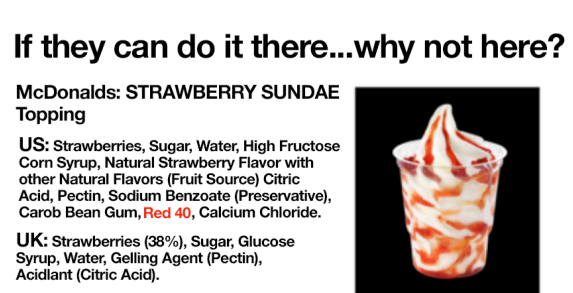In the early 1970s, a California physician made a startling discovery. Allergist Benjamin Feingold found that removing certain foods and ingredients from children’s diets resulted in improvements to some kids’ behavior. Parents who had eliminated foods that contain chemicals called salicylates—common in strawberries, grapes, and certain other foods—noticed improvements. So did parents who had eliminated Red 40, Yellow 5, and other synthetic food colorings. To this day, a diet that bears Feingold’s name has brought relief to tens of thousands of families.

In the decades since, artificial food dyes have drawn increasing scrutiny from researchers worldwide. In carefully conducted double-blind clinical trials, scientists have put Feingold’s observation to the test. Sure enough, some children who consumed dyes (in some cases, dyes combined with a preservative) showed markedly worse behavior compared to when they consumed a placebo that did not contain these additives. In other studies, a diet excluding dyes was found to be a useful treatment for some children with problem behaviors, compared with a diet that contained dyes. These findings have generally been confirmed by meta-analyses and other reviews of the existing scientific literature.
I’ve followed the research surrounding dyes and children’s behavior for decades. And my organization, the Center for Science in the Public Interest, has heard from thousands of parents who have told us of the chaos and disruption that dyed foods cause when consumed by kids. Symptoms can range from mild to severe—including hyperactivity, inattention, and out-of-control behavior, resulting in difficulties learning and maintaining relationships.
While salicylates occur naturally in healthful foods, synthetic food dyes are not essential components of any food. For starters, they are generally found in heavily processed junk foods, particularly candy, sugary cereal, sugary drink mixes, and other products that are heavily marketed to young children. Dyes provide no nutritive value or health benefit whatsoever. Their only purpose is cosmetic: They’re often used to simulate the presence—or disguise the absence—of real fruit or other nutritious ingredients.
For these reasons, in 2008, CSPI asked the Food and Drug Administration to eliminate Red 40, Yellow 5, and other synthetic colorings from the food supply. The agency, famous for moving at a glacial pace, has done little since. But in 2011 it at least acknowledged that dyes seem to cause problems for at least some kids. And in 2011, an FDA advisory panel narrowly voted against a warning label that would have alerted consumers about the problem. Since then, the evidence linking dyes and adverse behavior has continued to mount.
In Europe, where food safety regulators are typically a few years ahead of their American counterparts, dyed foods have borne that kind of warning label since 2010. As a consequence, most food manufacturers did the obvious: drop the dyes in favor of safer, natural colorings.

That brings us back to California. State Senator Bob Wieckowski (D-Fremont) is sponsoring legislation aimed at helping parents protect their children from dyes. His original bill would have required warning labels similar to the ones mandated in Europe. But in the face of intense opposition from the food industry, Wieckowski amended his bill to do something pretty unobjectionable: ask the state’s Office of Environmental Health Hazard Assessment to review the research on food dyes’ impact on children—and report back to the legislature so it could take appropriate action. It’s the kind of task that that office is perfectly suited to accomplish. And its evaluations are respected not just in California, but across the country. Wieckowski’s bill has cleared one key committee hurdle, and its fate now lies in the hands of the Senate Appropriations committee chaired by Senator Ricardo Lara.
California has a long history of taking the lead on protecting consumers. It was the first state to get artificial trans fat out of restaurant food; the FDA has since moved to eliminate artificial trans fat from the nation’s food supply. And California was the first state to put calorie counts on chain restaurant menus; calories are now appearing on chain restaurant menus nationwide (despite a recent delay imposed by the Trump Administration).
Wieckowski’s bill deserves to make it to the governor’s desk. The concern around dyes’ impact on kids sprouted in California, with Dr. Feingold’s discovery. California can again point the rest of the country in the right direction.